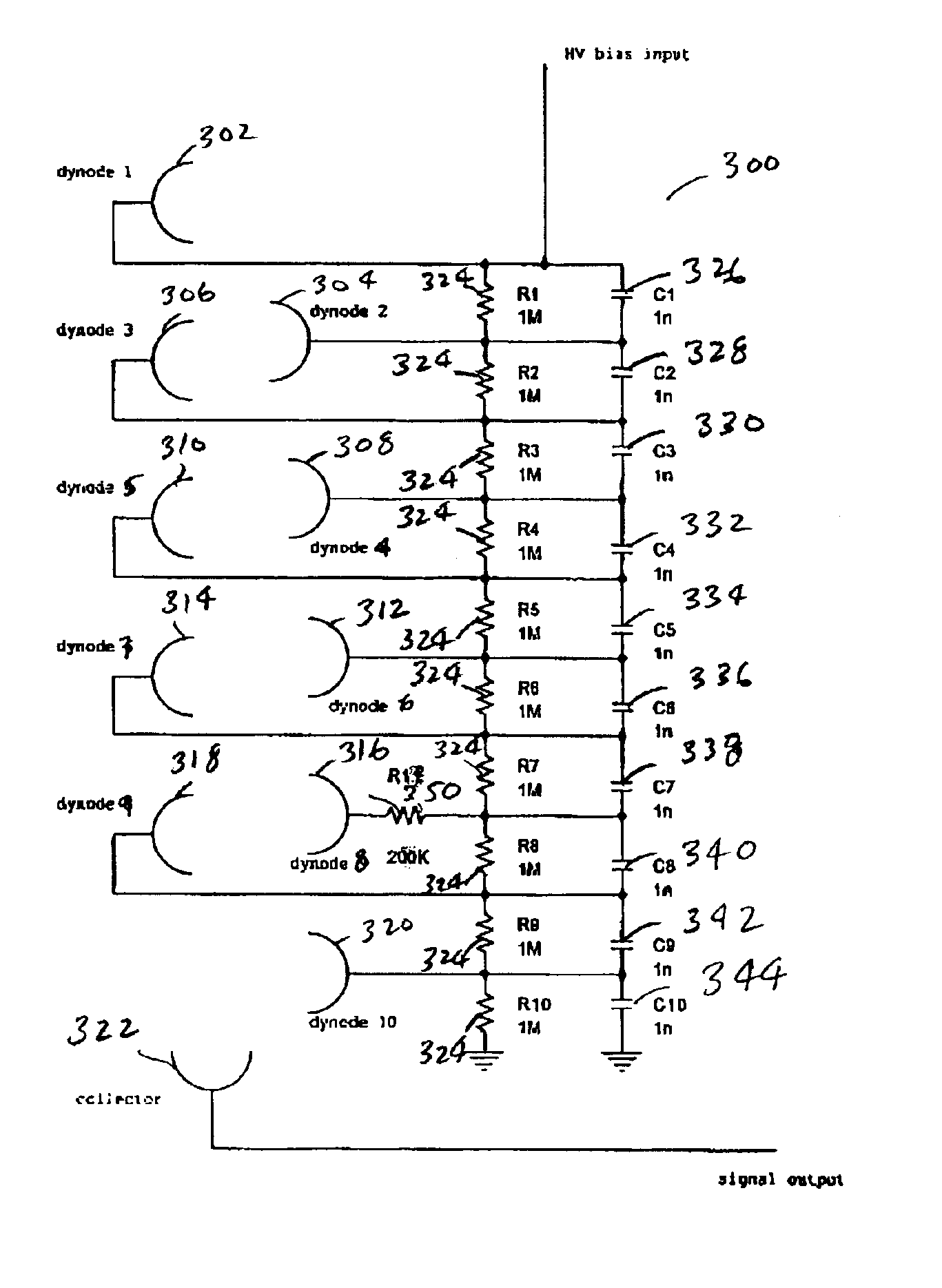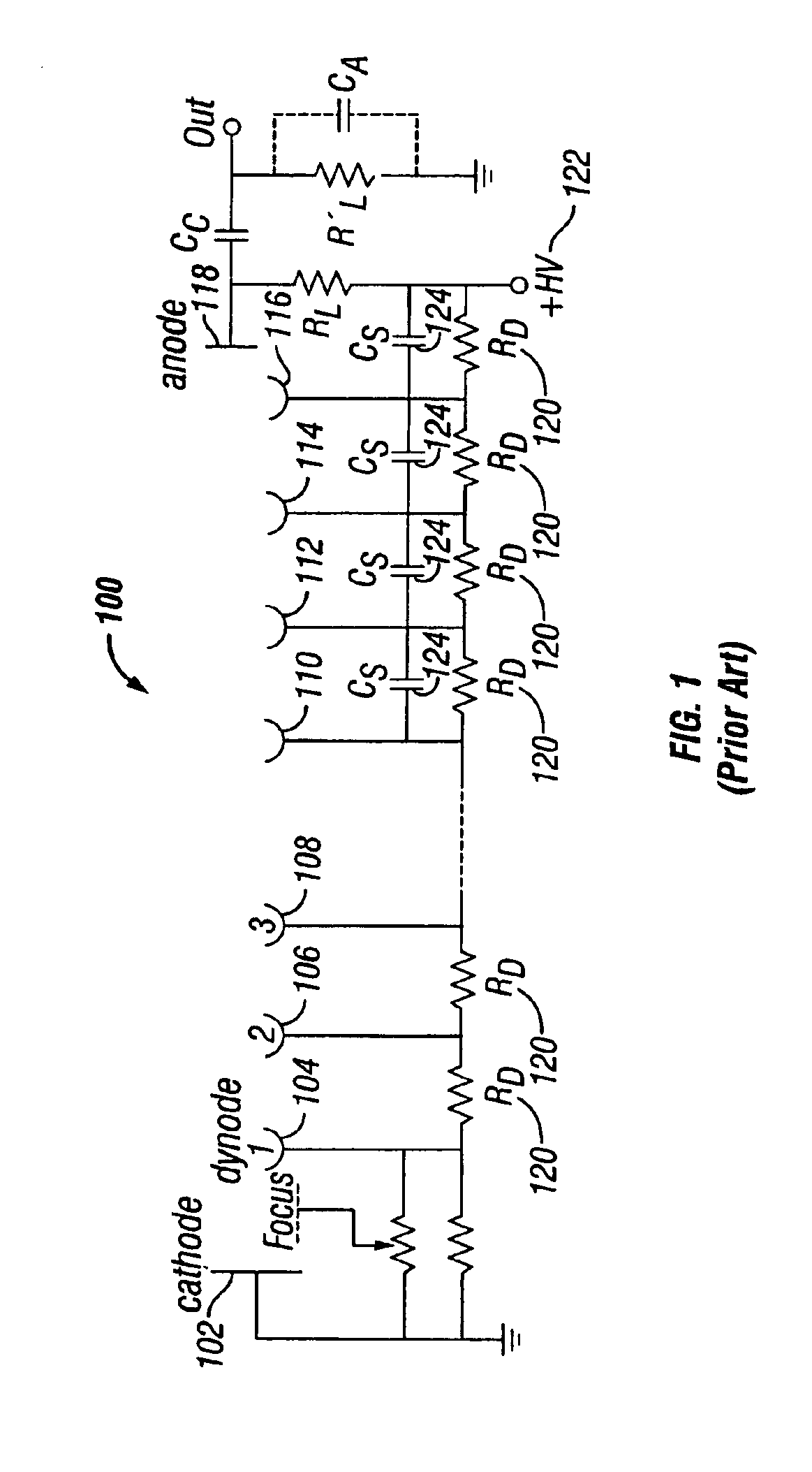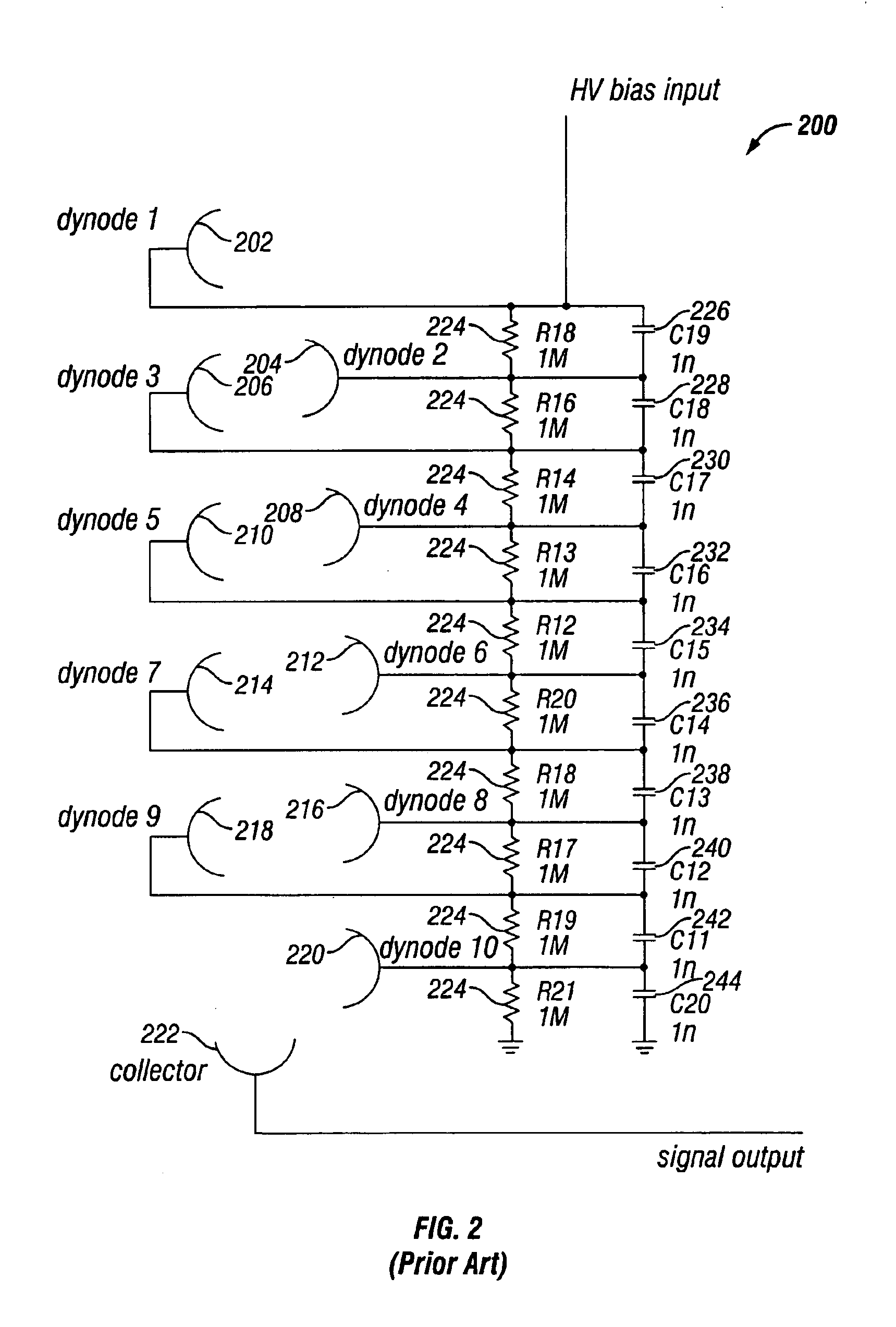Fast recovery electron multiplier
- Summary
- Abstract
- Description
- Claims
- Application Information
AI Technical Summary
Benefits of technology
Problems solved by technology
Method used
Image
Examples
Embodiment Construction
Embodiments of the present invention are directed towards modifications of an electron multiplier's bias network that limit the response of the multiplier when the multiplier is faced with an input signal larger than the upper limit of the range of interest, and also permit the electron multiplier to recover fully and rapidly when the large input signal ends. Rapid recovery allows the detector to be used to measure small signals that occur shortly after the out-of-range signal ends. Limiting the response of the electron multiplier to out-of-range input signals has the added benefit of increasing the lifetime of the detector by decreasing the gain of the multiplier during out-of-range signals. The following terms are used herein, namely: in-range signal; out-of-range signal; and saturating signal to describe different ranges of input signals. An in-range signal is one that is within the linear range of the electron multiplier. An out-of-range signal is a signal that is larger than th...
PUM
 Login to View More
Login to View More Abstract
Description
Claims
Application Information
 Login to View More
Login to View More - R&D
- Intellectual Property
- Life Sciences
- Materials
- Tech Scout
- Unparalleled Data Quality
- Higher Quality Content
- 60% Fewer Hallucinations
Browse by: Latest US Patents, China's latest patents, Technical Efficacy Thesaurus, Application Domain, Technology Topic, Popular Technical Reports.
© 2025 PatSnap. All rights reserved.Legal|Privacy policy|Modern Slavery Act Transparency Statement|Sitemap|About US| Contact US: help@patsnap.com



